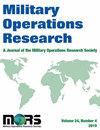利用MINLP识别节能蒸馏配置的研究进展
IF 0.7
4区 管理学
Q3 Engineering
引用次数: 6
摘要
在化学和石化工业中普遍存在的化学混合物的蒸馏分离是能源密集型的。在美国,将近3%的总能源用于蒸馏。改进蒸馏过程对于提高化学工业的可持续性至关重要。然而,设计蒸馏序列是具有挑战性的,因为选择集是巨大的,并且控制物理过程的方程是非凸的。传统的设计实践依赖于启发式,往往导致次优解决方案。Tumbalam Gooty等人提出了第一种方法,可以可靠地确定给定分离所需能量最少的蒸馏序列。通过嵌入子结构的凸壳并将重新公式线性化技术应用于多项式的分数,他们证明了他们的方法优于最先进的方法。他们的工作将有助于化学工业减少与蒸馏有关的温室气体排放。本文章由计算机程序翻译,如有差异,请以英文原文为准。
Advances in MINLP to Identify Energy-Efficient Distillation Configurations
Separation of mixtures of chemicals, ubiquitous in chemical and petrochemical industries, by distillation is energy intensive. Nearly 3% of the overall energy is used for distillation in the United States. Improving the distillation process is crucial for making chemical industries more sustainable. However, designing distillation sequences is challenging because the choice set is vast, and the equations governing the physical process are highly nonconvex. Traditional design practices rely on heuristics and often result in suboptimal solutions. Tumbalam Gooty et al. present the first approach that reliably identifies the distillation sequence that requires the least energy for a given separation. By embedding convex hulls of substructures and adapting the reformulation-linearization technique to fractions of polynomials, they demonstrated that their approach outperforms the state-of-the-art. Their work will help the chemical industry reduce greenhouse gas emissions associated with distillation.
求助全文
通过发布文献求助,成功后即可免费获取论文全文。
去求助
来源期刊

Military Operations Research
管理科学-运筹学与管理科学
CiteScore
1.00
自引率
0.00%
发文量
0
审稿时长
>12 weeks
期刊介绍:
Military Operations Research is a peer-reviewed journal of high academic quality. The Journal publishes articles that describe operations research (OR) methodologies and theories used in key military and national security applications. Of particular interest are papers that present: Case studies showing innovative OR applications Apply OR to major policy issues Introduce interesting new problems areas Highlight education issues Document the history of military and national security OR.
 求助内容:
求助内容: 应助结果提醒方式:
应助结果提醒方式:


